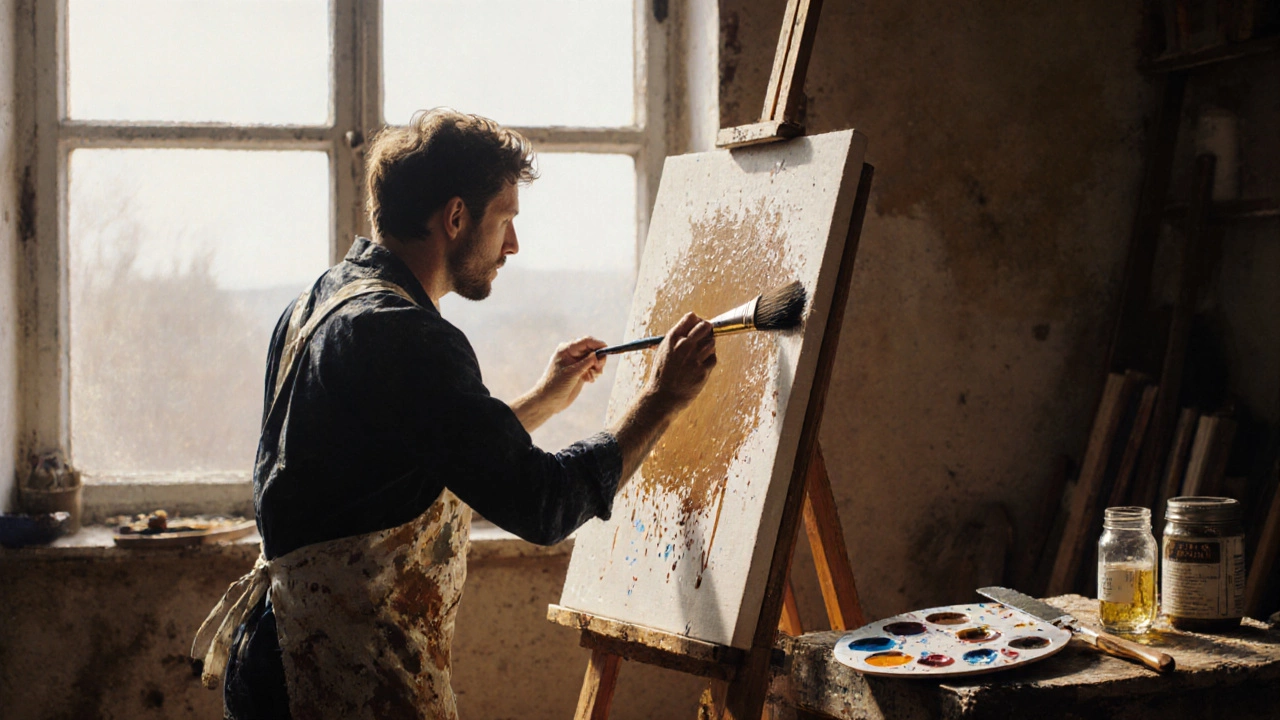Alla Prima Explained: The Direct Wet‑on‑Wet Painting Technique
9 Oct 2025Learn what the alla prima technique is, its history, essential tools, step‑by‑step workflow, pros, cons, and tips for mastering wet‑on‑wet painting.
Continue reading...When working with wet‑on‑wet painting, a method where fresh paint is applied into still‑wet layers to create smooth transitions without waiting for drying. Also known as alla prima, it lets artists finish a piece in one sitting, which is perfect for capturing fleeting light or emotion. This approach requires the right medium, quick brushwork, and a good eye for color harmony.
One of the most common partners for wet‑on‑wet is oil painting, a medium that stays workable for hours, giving you the flexibility to blend colors directly on the canvas. Because oil dries slowly, you can lay down a warm underpainting and then push fresh hues into it without harsh edges. Another key technique that often shows up is glazing, the application of thin, transparent layers over wet paint to enrich depth and modify tone. While glazing usually follows a dry layer, many artists adapt it within wet‑on‑wet sessions by thinning the glaze enough to merge with the wet base, adding luminous effects without breaking the flow.
Successful wet‑on‑wet work hinges on brushwork—the way you handle the brush determines whether colors meld or clash. A soft sable or synthetic blend works best for gentle gradients, while a firmer bristle can add texture when you want a more expressive finish. Keep your palette moist; a splash of linseed oil or a specialized medium extends the wet period, giving you more time to manipulate the paint. If you notice a color turning tacky too quickly, a quick spritz of solvent can revive the surface, but use it sparingly to avoid over‑thinning.
Many artists ask how to fix mistakes without ruining the whole piece. The good news is that wet‑on‑wet lets you adjust on the fly: simply scrape away the unwanted area while the paint is still soft, wipe it clean, and re‑apply the correct hue. This flexibility is why the technique is a favorite for portrait painters who need to capture subtle skin tones in one go. Remember, the goal is to keep the layers interacting—each stroke should speak to the next.
Below you’ll find a curated list of articles that dive deeper into each aspect of wet‑on‑wet painting. From fixing oil painting errors to mastering brush techniques, the collection covers practical advice, real‑world examples, and expert tips that will help you harness the full potential of this dynamic method.

Learn what the alla prima technique is, its history, essential tools, step‑by‑step workflow, pros, cons, and tips for mastering wet‑on‑wet painting.
Continue reading...